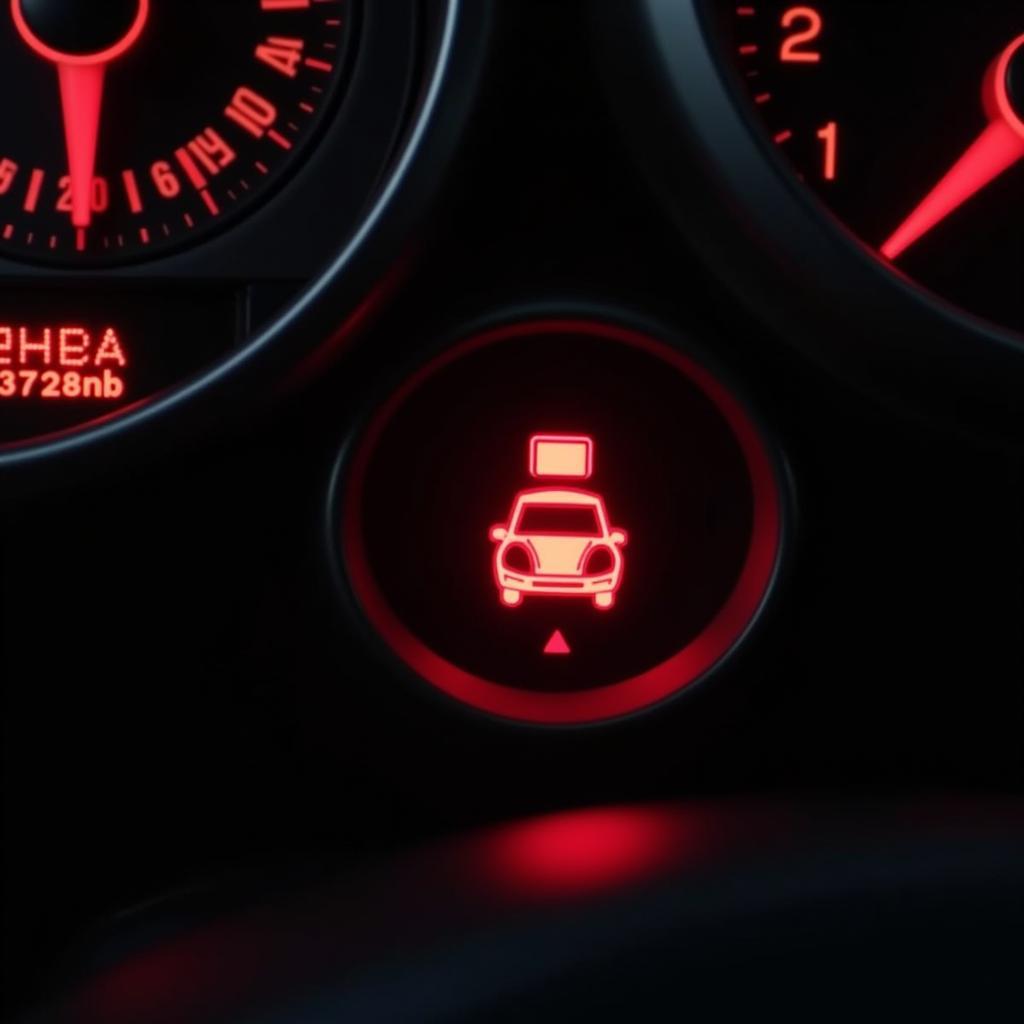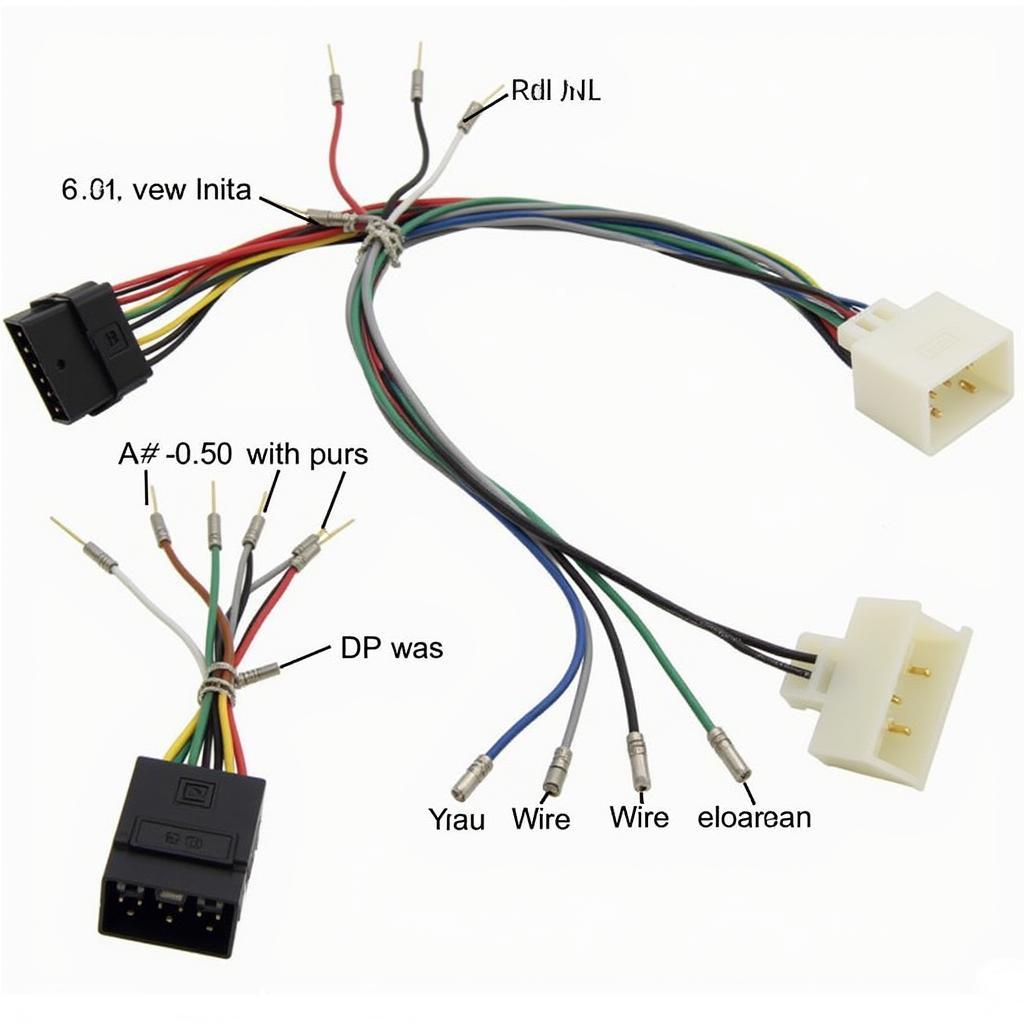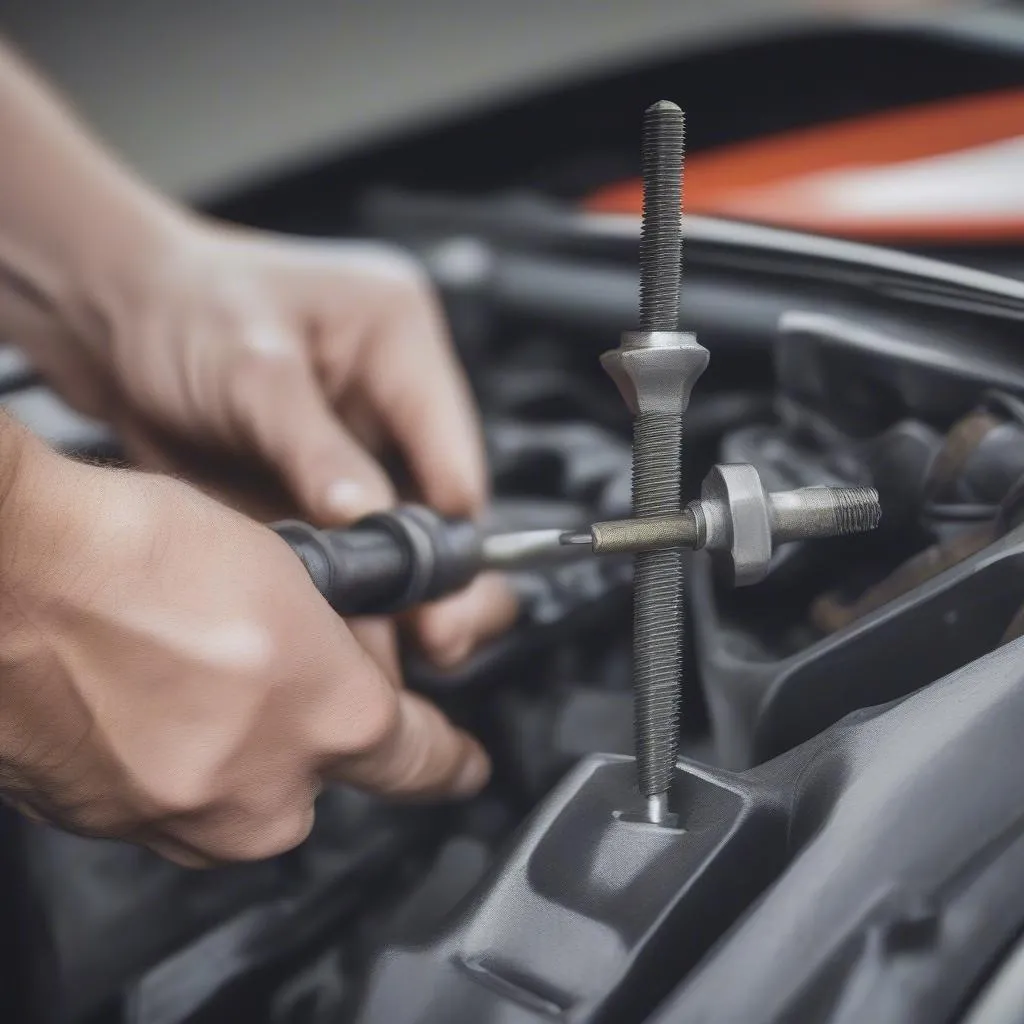The dreaded brake pad warning light on your Mini Cooper, specifically the Mini One, can be a cause for concern. This often overlooked symbol on your dashboard plays a crucial role in keeping you safe on the road. Ignoring it could lead to costly repairs and even compromise your safety. This article will guide you through understanding why the brake pad warning light illuminates and provide practical solutions to address this issue.
Understanding Your Mini One’s Brake Pad Warning Light
The brake pad warning light is a simple yet effective system. When illuminated, it signals that your brake pads have worn down to a point where they require replacement. The warning system usually relies on a sensor embedded within the brake pad itself. Once the pad’s friction material wears down to a predetermined level, this sensor comes into contact with the brake rotor, triggering the warning light on your dashboard.
Common Reasons for the Brake Pad Warning Light
While worn brake pads are the most common culprit, several other factors can trigger the brake pad warning light in your Mini One:
- Worn Brake Pad Sensors: Sometimes, the sensor itself can be faulty or damaged.
- Low Brake Fluid: Brake fluid is essential for transmitting the force you apply to the brake pedal to the brake calipers. If the fluid level is low, it could trigger the warning light.
- Faulty ABS System: While less common, a malfunctioning Anti-lock Braking System (ABS) can also trigger the brake pad warning light.
What to Do When Your Brake Pad Warning Light Comes On
1. Don’t Panic, But Don’t Ignore It:
A glowing brake pad warning light is a clear sign that your Mini One needs attention.
2. Check Your Brake Fluid:
Park your car on a level surface and locate the brake fluid reservoir under the hood. If the fluid level is low, carefully top it up with the recommended brake fluid type for your Mini One.
3. Inspect Your Brake Pads:
If you’re comfortable with basic car maintenance, you can visually check the thickness of your brake pads through the spaces between the wheel spokes. If they appear thin or you see metal-on-metal contact, it’s time for a replacement.
4. Seek Professional Help:
If you’re unsure about any aspect of inspecting or replacing brake components, it’s always best to consult a qualified mechanic specializing in Mini Coopers.
 Mini One Dashboard with Brake Pad Warning Light Illuminated
Mini One Dashboard with Brake Pad Warning Light Illuminated
Importance of Timely Brake Pad Replacement
Timely brake pad replacement is crucial for several reasons:
- Safety: Worn brake pads significantly reduce your Mini One’s braking efficiency, increasing stopping distances and the risk of accidents.
- Preventing Costly Repairs: Driving with worn brake pads can damage other brake components, such as rotors and calipers, leading to more expensive repairs.
- Maintaining Vehicle Value: Regular brake maintenance, including timely pad replacements, demonstrates responsible car ownership, which can positively impact your Mini One’s resale value.
Preventing Premature Brake Pad Wear
-
Avoid Aggressive Driving: Harsh braking and rapid acceleration put excessive strain on your brake pads, accelerating wear.
-
Lighten Your Load: Carrying heavy loads increases the stress on your braking system.
-
Maintain Proper Tire Pressure: Underinflated tires create more rolling resistance, forcing your brakes to work harder.
“Many Mini One owners don’t realize the impact their driving style has on brake pad life,” says Tim Johnson, a senior mechanic at Munich Motors. “Smooth braking and anticipating stops can significantly extend the lifespan of your brake pads.”
Remote Diagnostics and Programming for Mini One Brake Issues
In today’s digitally connected world, remote diagnostics and programming offer advanced solutions for car maintenance, including brake system issues:
-
Remote Diagnostics: Specialized software can remotely access your Mini One’s onboard computer, retrieve diagnostic trouble codes related to the brake system, and even identify potential issues before they escalate.
-
Software Updates and Programming: Manufacturers often release software updates that can improve brake system performance or address known issues. Remote programming allows for these updates to be installed wirelessly, saving you a trip to the dealership.
“Remote diagnostics allow us to identify brake system problems quickly and accurately,” explains Emily Chen, a software engineer specializing in automotive telematics. “This technology helps us provide faster and more efficient service to our customers.”
 Mechanic Using a Laptop for Remote Diagnostics on a Mini One
Mechanic Using a Laptop for Remote Diagnostics on a Mini One
Conclusion
The brake pad warning light in your Mini One is a crucial safety feature that should never be ignored. Understanding its purpose, recognizing potential issues, and taking timely action can save you from costly repairs and ensure your safety on the road. If you’re unsure about any aspect of your Mini One’s braking system, consult a qualified mechanic specializing in Mini Coopers for expert diagnosis and repair.
FAQs About Mini One Brake Pad Warning Light
1. How long can I drive with the brake pad warning light on?
It’s not recommended to drive with the brake pad warning light illuminated. As soon as the light comes on, it’s best to have your brake system inspected and addressed immediately.
2. Can I replace my Mini One’s brake pads myself?
While it’s possible, brake pad replacement requires mechanical knowledge and specialized tools. If you’re not comfortable with the process, it’s best to have a professional handle it.
3. How often should I replace my Mini One’s brake pads?
Brake pad lifespan varies depending on driving conditions and habits. However, it’s a good rule of thumb to have them inspected every 10,000 miles and replaced as needed.
4. How much does it cost to replace brake pads on a Mini One?
The cost of brake pad replacement can vary based on factors like location, labor rates, and the type of brake pads used. It’s best to contact a reputable mechanic or dealership for an accurate quote.
5. Can I use any brake pads for my Mini One?
It’s crucial to use brake pads specifically designed for your Mini One’s make, model, and year. Using incorrect brake pads can compromise braking performance and safety.
6. Why is my brake pad warning light still on after replacing the brake pads?
If the warning light remains on after replacing the brake pads, there might be an issue with the sensor, wiring, or another component of the braking system. Further inspection by a qualified mechanic is recommended.
7. Can remote diagnostics help me avoid costly brake repairs?
Yes, remote diagnostics can identify potential brake system problems early on, allowing for timely maintenance and preventing minor issues from escalating into major repairs.



